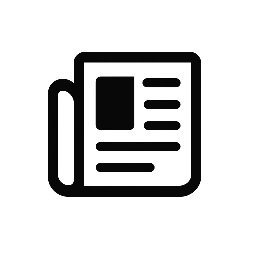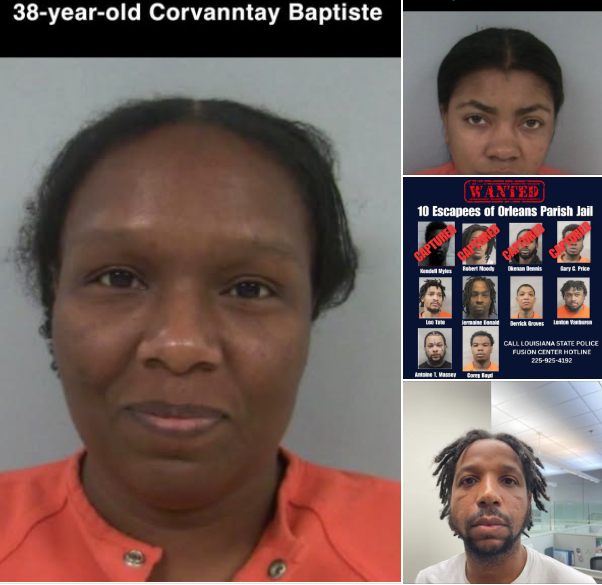In a dramatic escalation of the now-infamous New Orleans jail escape that continues to grip both local and national attention, two women — Corvanntay Baptiste, 38, of Slidell, and Cortnie Harris, 32, of New Orleans — have been arrested for their alleged roles in aiding the escape and subsequent evasion of capture by inmates, including 19-year-old Corey Boyd. According to official statements from the Louisiana State Police, Harris and Baptiste actively supported the fugitives after their brazen breakout from the Orleans Justice Center on May 16. Their arrests, which occurred early Wednesday morning, mark a significant development in an already staggering case that has shaken public confidence in jail security, raised urgent questions about institutional corruption, and prompted broader scrutiny of conditions and procedures inside one of Louisiana’s most troubled detention facilities.
Authorities allege that Cortnie Harris was not merely a passive acquaintance to the inmates on the run. Rather, she is believed to have taken on a direct logistical role, allegedly driving two of the escaped prisoners around the city of New Orleans and maintaining communication with them via mobile phone both before and after the escape. Meanwhile, Corvanntay Baptiste is accused of providing material support to Corey Boyd, one of the five inmates who had been recaptured as of Wednesday afternoon. According to police, Baptiste was in frequent contact with Boyd during his time on the run and even brought him food while he remained in hiding. These allegations not only implicate the women in the ongoing crisis but highlight the broader support network that enabled the escapees to elude capture for days.
The nature of the escape itself — involving ten inmates, a toilet ripped from a jailhouse wall, and what police describe as collusion by an inside staff member — is as audacious as it is troubling. The method by which the inmates fled the Orleans Justice Center has shocked many and forced a reevaluation of jail infrastructure and staff accountability. At approximately 1 a.m. on May 16, the inmates are believed to have climbed through a hole left exposed after they successfully dislodged a toilet fixture from the wall in one of the jail’s pods. This extraordinary feat, authorities allege, was made possible by the actions of 33-year-old jail maintenance worker Sterling Williams, who reportedly shut off the water supply to the pod, allowing the toilet to be removed without detection or flooding. Williams was arrested prior to the apprehensions of Baptiste and Harris and faces charges that could include conspiracy and aiding an escape.
The Orleans Justice Center has long been the subject of controversy and scrutiny. Opened in 2015 as a replacement for the aging Orleans Parish Prison, the facility was designed to correct many of the security and oversight failures that plagued its predecessor. Yet, despite its modernized infrastructure and lofty goals, the jail has been riddled with problems — from staffing shortages and inmate violence to smuggling and inconsistent supervision. This latest incident is likely to amplify calls for reform, not only in New Orleans but across Louisiana’s broader correctional landscape. The facility’s failure to prevent such a coordinated mass escape is particularly alarming given the well-documented challenges the jail has faced in recent years.
As of Wednesday, only half of the ten escaped inmates had been recaptured: Corey Boyd, Kendell Myles, Robert Moody, Gary Price, and Dkenan Dennis. The remaining fugitives — Antoine Massey, Lenton Vanburen, Jermaine Donald, Leo Tate, and Derrick Groves — were still at large. Their continued absence has intensified public pressure on law enforcement agencies and stirred fears among local residents. Police have urged the public to remain vigilant and report any suspicious activity, while also warning that aiding or harboring an escapee is a serious criminal offense.
If found guilty, Corvanntay Baptiste and Cortnie Harris could face up to five years in prison, a $500 fine, or both. While the penalties may seem modest in the context of a jailhouse escape that has endangered public safety and upended the city’s criminal justice system, the charges underscore the state’s intention to pursue every possible angle in bringing those responsible to justice — including civilians who allegedly provided assistance to the escapees. The involvement of outside accomplices like Harris and Baptiste reveals the multi-layered complexity of the case and suggests a more coordinated escape than initially understood.
The arrest of Sterling Williams, the maintenance worker accused of aiding the escape from inside the facility, adds yet another dimension to the unfolding saga. Investigators allege that Williams deliberately shut off water access to the pod where the inmates were housed, thereby enabling them to dismantle the toilet without triggering immediate detection. The manipulation of the jail’s infrastructure by an employee directly undermines the very security apparatus meant to prevent such an incident. If proven, this inside job would represent a catastrophic breach of trust and duty by a correctional staff member, highlighting the vulnerabilities that exist when institutional oversight fails.
The physical act of removing a toilet from the wall and escaping through a resulting hole may sound almost cinematic, yet it is tragically real — and emblematic of deeper systemic issues. For inmates to have had the opportunity and tools to execute such a maneuver without being stopped in real-time, numerous checks must have failed. Surveillance, pod checks, plumbing alerts, and routine maintenance reviews should, under proper administration, have flagged such suspicious activity. That none of these mechanisms intervened before the escape was completed raises alarm bells about not just staffing but the operational culture within the facility.
It is within this context of institutional failure that the role of Corvanntay Baptiste and Cortnie Harris becomes even more important. Their alleged actions after the escape were not isolated but rather interwoven into a broader network of failures and complicity. Police believe Harris actively used her vehicle to transport two escapees across New Orleans — an act that, if true, suggests either a pre-existing plan or swift coordination once the inmates were free. Baptiste’s reported provision of food to Corey Boyd while he was in hiding indicates a level of logistical support that could have extended his time at large, possibly enabling further crime or creating obstacles for recapture efforts.
These are not merely abstract accusations; they carry serious implications for law enforcement’s ongoing investigation and for future legal proceedings. Prosecutors will likely examine communications, financial records, and location data to substantiate the charges against the women. Meanwhile, their arrests serve as a public message that authorities will pursue all individuals involved in aiding and abetting fugitives, regardless of their personal connections to the escapees. That one of the accused, Corvanntay Baptiste, was reportedly feeding Corey Boyd while he was evading law enforcement illustrates a degree of commitment that goes beyond casual acquaintance. It suggests active participation in a criminal effort that challenged the entire correctional infrastructure of New Orleans.
The five inmates still on the run remain a significant concern. Each additional day they remain at large increases the risk to public safety and the possibility that they may receive aid from other individuals outside the jail. The Louisiana State Police and other agencies have likely mobilized extensive resources, including aerial surveillance, canine units, and inter-agency cooperation, to track the remaining fugitives. Yet, every passing hour makes the trail colder. The possibility that others like Harris and Baptiste may be assisting these individuals cannot be discounted, and law enforcement will likely be scrutinizing the social and familial networks of each escapee to locate potential accomplices.
Sterling Williams’ alleged sabotage of the jail’s water system adds further intrigue to the escape narrative. As a maintenance worker, Williams would have possessed both access and knowledge of the jail’s mechanical systems — assets that, if used maliciously, could compromise the entire security architecture of the facility. His purported decision to cut off water access not only enabled the inmates to remove the toilet without flooding the pod but also gave them a crucial window of time to execute their plan. This raises unsettling questions about internal vetting procedures, staff loyalty, and oversight mechanisms. If a single staffer can wield this much influence over a facility’s structural integrity, what other vulnerabilities exist?
Moreover, the timing and scale of the escape suggest coordination and premeditation. Ten inmates escaping together through a single breach point implies a collective plan, perhaps developed over weeks or even months. That at least three individuals — two from the outside and one from within — are now facing charges related to aiding the escape indicates a possible conspiracy. Whether more accomplices will be identified in the days ahead remains to be seen, but authorities will undoubtedly pursue every lead to uncover the full scope of involvement.
This incident could also have broader implications for state policy on jail management and staff accountability. Already, public outcry is growing louder, with many demanding independent investigations and reforms. The Orleans Justice Center has long struggled with issues of understaffing, low morale, and budget constraints — all factors that may have contributed to the conditions that enabled the escape. In the wake of this event, state and local officials may face pressure to increase funding, improve staff training, and implement more rigorous oversight protocols.
Meanwhile, the lives of Corvanntay Baptiste and Cortnie Harris have been irrevocably changed. Whether motivated by loyalty, desperation, or something else entirely, their alleged decisions have now placed them at the center of one of the most significant jail escape cases in recent Louisiana history. If convicted, they may serve prison time themselves — not for escaping justice, but for facilitating its evasion.
As for Corey Boyd and the other captured escapees, their recapture may bring some closure, but it also raises further questions about their motivations, methods, and the relationships that enabled their brief taste of freedom. Why did they choose this moment to act? How long had they been planning? And what consequences will they now face, not only for their original charges but for the additional crime of escape?
In sum, the arrests of Corvanntay Baptiste and Cortnie Harris represent both a turning point in the unfolding crisis and a grim reminder of the vulnerabilities within Louisiana’s carceral system. Their alleged actions — providing food, transportation, and communication to dangerous fugitives — have complicated the task of law enforcement, endangered public safety, and exposed the fragility of jail operations that should have been airtight. The involvement of a jail staff member, Sterling Williams, further underscores the urgency of reform and the need for accountability at every level.
As the search continues for the remaining five fugitives, and as legal proceedings begin against those already in custody, the people of New Orleans — and Louisiana at large — are left to grapple with the fallout from a jail escape that should never have happened, yet did. What began with a missing toilet and a silent act of sabotage has ballooned into a criminal conspiracy stretching from the cells of the Orleans Justice Center to the streets of New Orleans, drawing in accomplices, exposing systemic failures, and demanding answers from institutions long overdue for change.


Leave a Reply